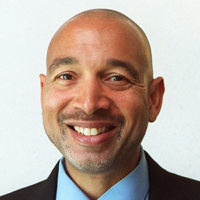Flint, Michigan, is the modern equivalent of the Tuskegee Experiment, the federal study of syphilis in hundreds of Alabama black men between 1932 and 1972. The subjects were not told they had the disease, and they were not treated for it, even after penicillin became available. Just as Tuskegee is America’s most horrific case of medical racism, Flint and its tainted water now epitomize the worst kind of environmental racism at the hands of government agencies.

Doctor injects test subject with placebo as part of the Tuskegee Syphilis Study. Photo: U.S. Public Health Service.
“When will this madness stop?” said Robert Bullard, the dean of Texas Southern University’s School of Public Affairs and author of the 2012 book on environmental discrimination, “The Wrong Complexion for Protection.” He told me in a telephone interview, “It didn’t really surprise me, given the historical level of disrespect.”
Flint is not a surprise just because of reasons that are now well known: cheap city officials, who drew from the polluted Flint River instead of Detroit’s water supply; Michigan officials who discredited the populace, a local pediatrician and Virginia Tech researchers who found elevated lead levels in children; and regional federal Environmental Protection Agency officials, who failed to publicly challenge the state’s inaction.
No, Flint happened mostly because America tolerates the polluting of the poor and people of color every day. “This is a very familiar story that could have happened anywhere. It just happened to show up here,” said David Bellinger, who studies the effects of lead on cognitive development, at Boston’s Children’s Hospital. “People shouted loudly but officials did not pay attention and made decisions on the bottom line. It’s terrible.”
Name the pollutant or toxin, from car emissions to coal ash, and you will find higher exposures for poor people, African Americans and Latinos. Numerous studies have shown that people of color comprising the majority of residents who live close to commercial hazardous waste sites, and that children of color represent two-thirds of kids who live within a mile of chemical facilities. A 2012 Yale study found that counties in the United States with the lowest air quality just happened to have higher percentages of African Americans and poor people than counties with the highest quality air.
Massachusetts is part of that picture, with Latinos three times as likely as white residents to live near hazardous facilities, according to a report by the Center for Effective Government.
While there are major correlations between poverty and proximity to toxic sites, race is a stand-alone factor. “Blacks experience such a high pollution burden that black households with incomes between $50,000 and $60,000 live in neighborhoods that are, on average, more polluted than the average neighborhood in which white households with incomes below $10,000 live,” University of Colorado researchers said in a stunning 2008 report.
Compared with that kind of finding, it sounded like an understatement when pollution researcher Paul Mohai of the University of Michigan, told me Flint raises the question of “whether we as a society care about people of color and poor people as we should.”
The answer is a definitive “no.” Last fall, I toured low-income, Latino parts of Houston with a delegation from the Union of Concerned Scientists, for which I am now a part-time consultant.
I needed to take asthma medicine after watching a scrap metal plant spew clouds of dust into the sky from far across a river. Texas Southern students who were with us registered federally-unhealthy levels of particulates with their monitor. I saw many homes located near oil refinery tanks.
It is unclear who will address those conditions. Despite the EPA’s victories during the Obama years in establishing new fuel efficiency and pollution standards, the agency has faced withering criticism in recent months for ineptly addressing charges of community pollution. A 2011 Deloitte report commissioned by the EPA found years of backlogged cases. the Center for Public Integrity and NBC News in 2015 reported that the agency’s civil rights office rejected or dismissed more than 9 out of every 10 cases between 1996 and mid-2013.
That puts in unflattering relief President Obama’s response to the Flint crisis. He has released $80 million in aid and claimed he would be “beside myself” if he were a Flint parent. Until the nation is alarmed, his words mean nothing.
On the eve of a 1997 apology from President Clinton for Tuskegee, a city resident who claimed lineage to men in the experiment told the New York Times, “They thought we were animals, stupid, that we didn’t know better. Times haven’t changed when it comes to blacks.’’
Flint might even be worse. Most people wouldn’t make even an animal drink lead.
This post was first published in the January 30, 2016 Boston Globe.
